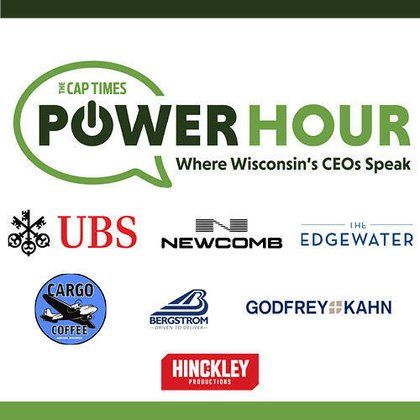By Tom Still
JANESVILLE, Wis. — In a windswept industrial park on Janesville’s south side, the future of fusion energy is rolling out in ways that seemed unlikely even a decade ago. However, the grandest fusion debut of them all — clean, commercial-scale energy — may still be a decade or two away.
That’s not from skeptics of the work being performed by SHINE Technologies, but the company’s visionary founder.
“Some people believe production of fusion energy on a large scale is five or so years away, but I just don’t believe that,” said Greg Piefer, the UW-Madison trained nuclear engineer who brings both scientific and business acumen to the company. “I think it’s well out there — perhaps 20 years or so — before we figure out the really tough physics and have enough practice to produce reliable, cheap fusion energy.”
Interviewed before a ribbon-cutting ceremony at SHINE’s newest facility, Piefer wasn’t throwing cold electrons on fusion’s future. On the contrary, he believes a phased approach will build valuable expertise through “practice;” deliver marketable and even life-saving products; return profits to shareholders; and amass enough money to invest in the long-term energy goal.
First, some definitions: Fusion energy is the same atomic reaction that powers the sun. It’s an emissions-free form of energy generation that could transform the world if properly harnessed. Unlike fission, which is the splitting of atoms for energy in a controlled manner, fusion is a melding of lightweight atoms (deuterium and tritium) to produce sub-atomic particle neutrons, helium and energy — mostly in the form of heat.
The fuel source is infinite, the energy “density” is at least 10 million times that of fossil fuels, there are no carbon emissions and the neutrons produced by the reaction are far more useful and valuable than the energy it takes to launch a reaction.
There has been renewed excitement about fusion energy since late 2022 when the National Ignition Laboratory within the Lawrence Livermore federal lab created a fusion reaction that produced more energy than it took to produce. It was far from the “Holy Grail” of fusion, but still a breakthrough that encouraged physical scientists everywhere.
Half a continent away from California’s Livermore, SHINE has taken dramatic steps of its own.
In early August, SHINE announced it had demonstrated visible Cherenkov radiation or “light” produced by fusion for the first time in history. The head of the American Nuclear Society called it a “milestone” moment.
Until then, fusion evidence was not visible to the naked eye. It could only be demonstrated and detected with instruments. Light from neutrons in SHINE’s “Chrysalis” reactor was on a scale with what can be seen emanating from some small nuclear fission test reactors.
In fact, Piefer said, SHINE is now “the world’s largest fusion source of neutrons,” producing about 20 times more than other known fusion sources. That has applications in security inspections and other tests to help manufacturers and defense experts ensure the integrity of critical components.
The latest chapter opened Aug. 16 with the dedication of SHINE’s “Cassiopeia,” the largest facility in North America dedicated to producing non-carrier-added lutetium-177. If paired with a cancer-seeking molecule, this medical isotope can deliver highly targeted radiation to cancerous cells — killing the cancer but saving healthy cells.
The Cassiopeia facility will produce about 100,000 Lu-177 doses per year before doubling to 200,000 doses over time. The half-life of Lu-177 is short, so air delivery for medical purposes is essential. The SHINE process will help to replace aging isotope sources, all currently outside the United States. Just down the road in Beloit, NorthStar Medical Radioisotopes is also creating a domestic isotope source by making molybdenum-99, core to another widely used therapy.
For Piefer, products and processes created by SHINE provide “practice” in achieving scalable fusion energy. If that’s 20 years away, however, what about clean energy needs between now and then?
That brings up another SHINE goal, which is recycling waste from nuclear fission reactors, current and future. Fission must remain a long-term energy source to counter climate change, Piefer said, and safely recycling fission’s waste is key.
“My biggest fear is that too much enthusiasm around fusion (energy) will prevent us from investing in fission” as proven, emissions-free energy source, he added.
Twenty years may be a long time to wait for fusion’s full power, but not when the goal is an infinite energy source.
Still is president of the Wisconsin Technology Council. Reach him at tstill@wisconsintechnologycouncil.com.
###





